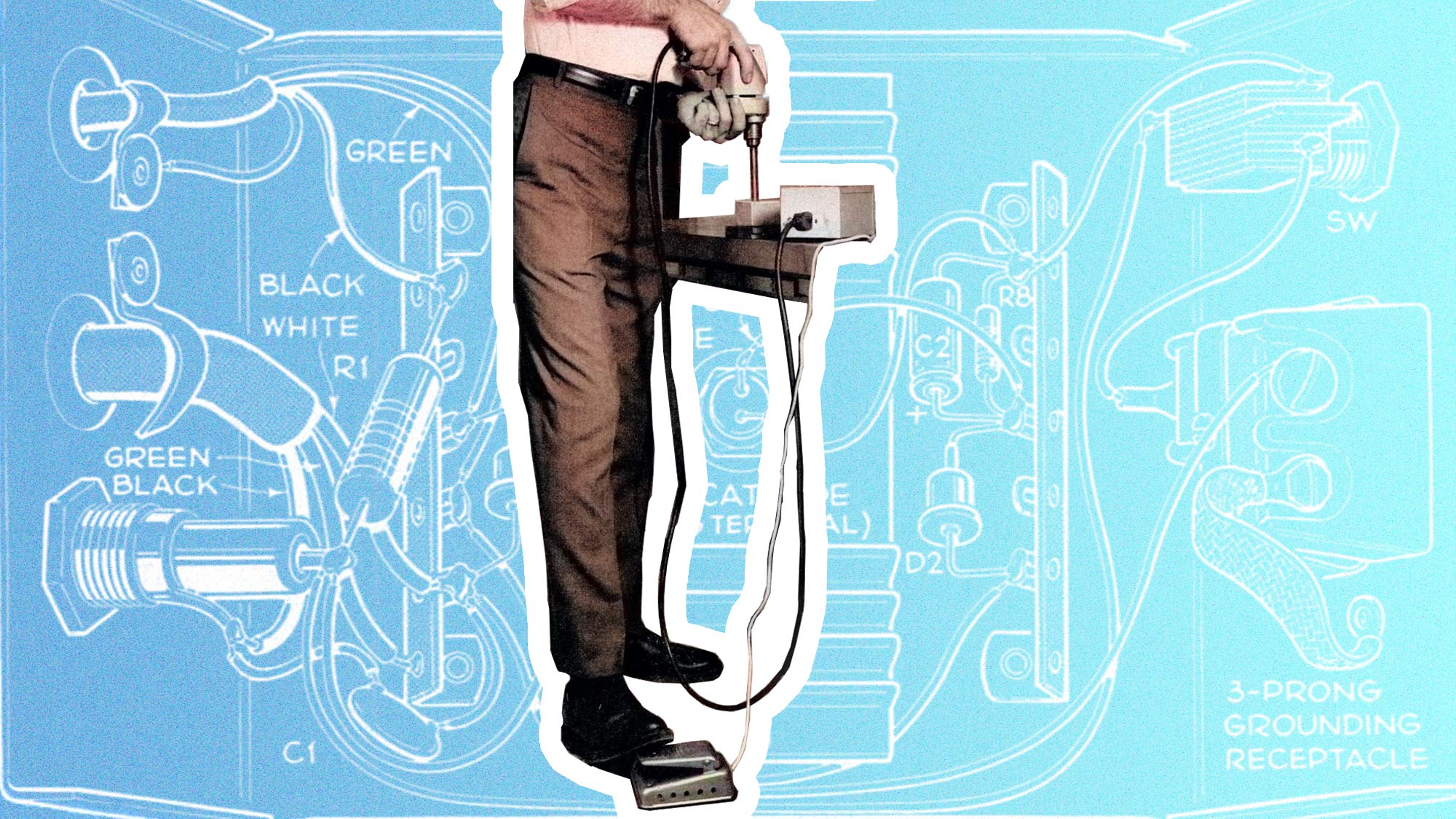FROM ANCIENT treadwheel cranes to modern guitar effects pedals, the creative energy of our feet has come a long way. Roman aqueducts, medieval castles, and Gothic cathedrals were raised, mega-stone by mega-stone, by machines powered by human-size hamster wheels. Treadles, or foot levers, made their debut in the Middle Ages to power looms and spinning wheels. The stair climber got its start in 1818 as a prison treadmill—not to intentionally torment England’s inmates (as sometimes alleged), but to put their feet to work, turning gears to pump water and grind corn. In the late 19th century, pedal power took a fresh turn as artisans used the wheels of stationary bikes to spin up their wood lathes, bandsaws, drill presses, and knife grinders. By the early 20th century, even percussionists were getting in on foot action, adding pedals to drum sets and possibly taking pedal-effects cues from the centuries-old piano.
By 1967, when Popular Science electronics editor Ronald M. Benrey offered instructions for building a footswitch to control handheld electric tools, pedal power looked altogether different. When electricity and combustion engines had rolled out half a century earlier, our feet could suddenly spin up powerful cranes or propel cars at dizzying speeds with little more than a tap. No more sweating, huffing, and puffing. But even in 1967, using footswitches in home workshops was something of a novelty, especially the speed-control variety. Of course, some stationary home tools, like sewing machines, had standardized footswitches decades earlier.
In fact, Benrey wasn’t the first Popular Science editor to offer pedal-power DIY instructions. In December 1943, longtime contributor Walter E. Burton explained how to motorize a treadle sewing machine. His instructions include an electric motor controlled by a mechanical footswitch that worked like a clutch, engaging and disengaging the motor from the sewing machine’s flywheel. Burton’s design might have been inspired by a Popular Science contributor who, nearly a decade earlier (October 1935), shared how he’d used a fan motor to automate his sewing machine, connecting it to the treadle. Perhaps the most innovative use of pedal power comes from a December 1880 Popular Science story that describes the use of wind- and water-powered motors (electricity was not readily available then) controlled by foot pedals to drive a variety of home workshop tools, including sewing machines. (Alternative energy DIYers might be inspired by 1880 domestic motor designs.)

What makes Benrey’s 1967 foot pedal unique is its speed-control feature. In addition to a simple on-off switch (referred to as “full” power), Benrey describes how to add a variable setting. When the switch is flipped to “variable,” the speed of the tool, such as the electric drill featured in the story, can be controlled with your foot. The catch is that in variable mode, the foot pedal delivers only about three-quarters of the electric current required to run the tool at full speed—a limitation of the added electronics. For full power, Benrey’s added switch must be flipped from variable to full.
Today, footswitches, including the variable-speed variety, like Benrey’s, can be purchased, ready to use, for under $20. Of course, DIY enthusiasts can build one using any number of instructional videos. And throwback DIYers nostalgic for 1960s-style ingenuity could even build Benrey’s model. When looking for a silicon-controlled rectifier (SCR), which varies the tool’s speed by translating foot pressure to a corresponding amount of electric current, today there are a variety of thyristors that will do the trick. Plus, being handy with a soldering iron and comfortable with wiring diagrams is really a prerequisite. Whether you choose to build your own switch or not, if you’re the creative type who regularly works with power tools, you might want to add pedal power to your arsenal—you’ll probably wonder why it took you so long to unleash the power in your feet.
Read more PopSci+ stories.

